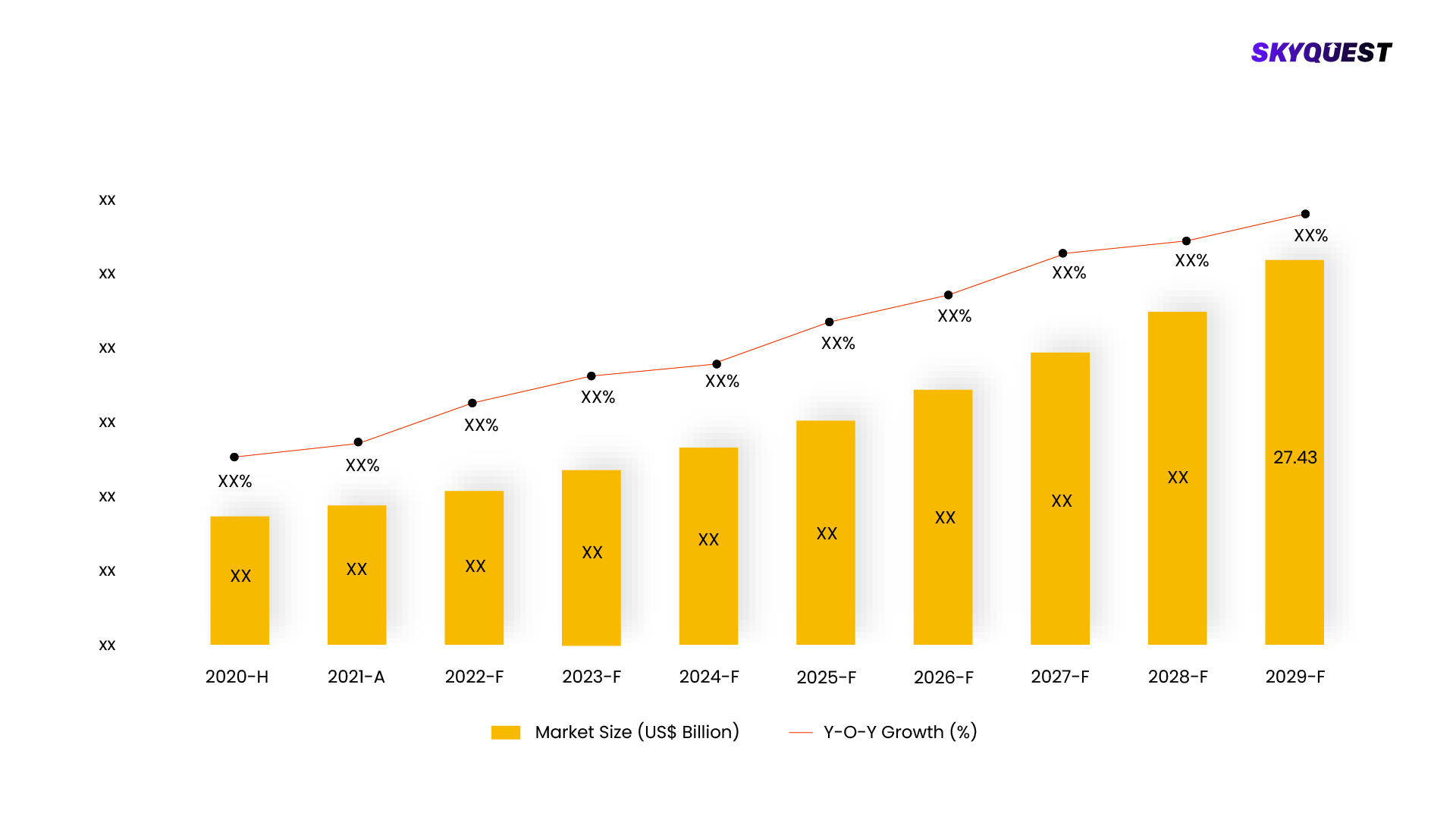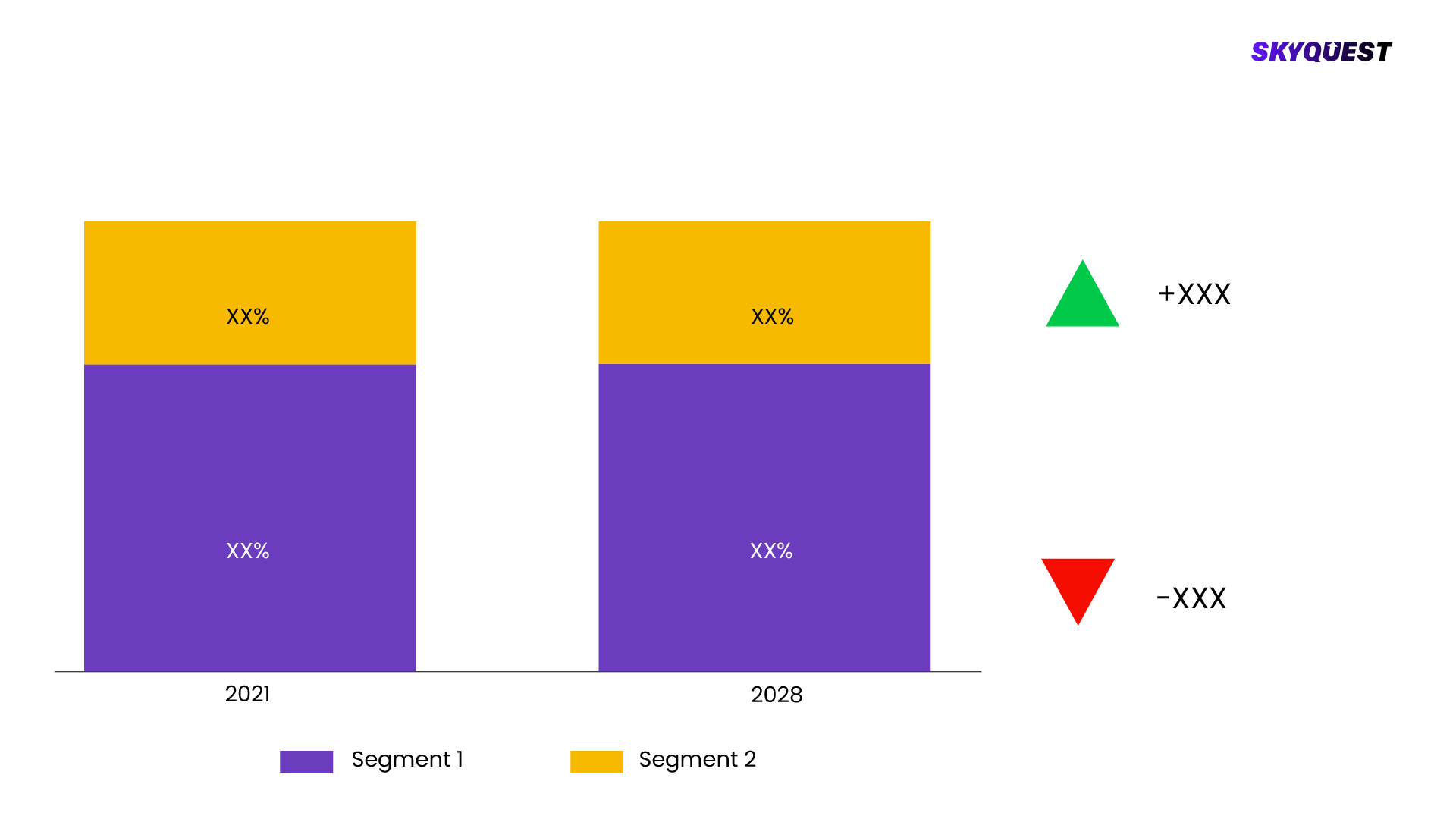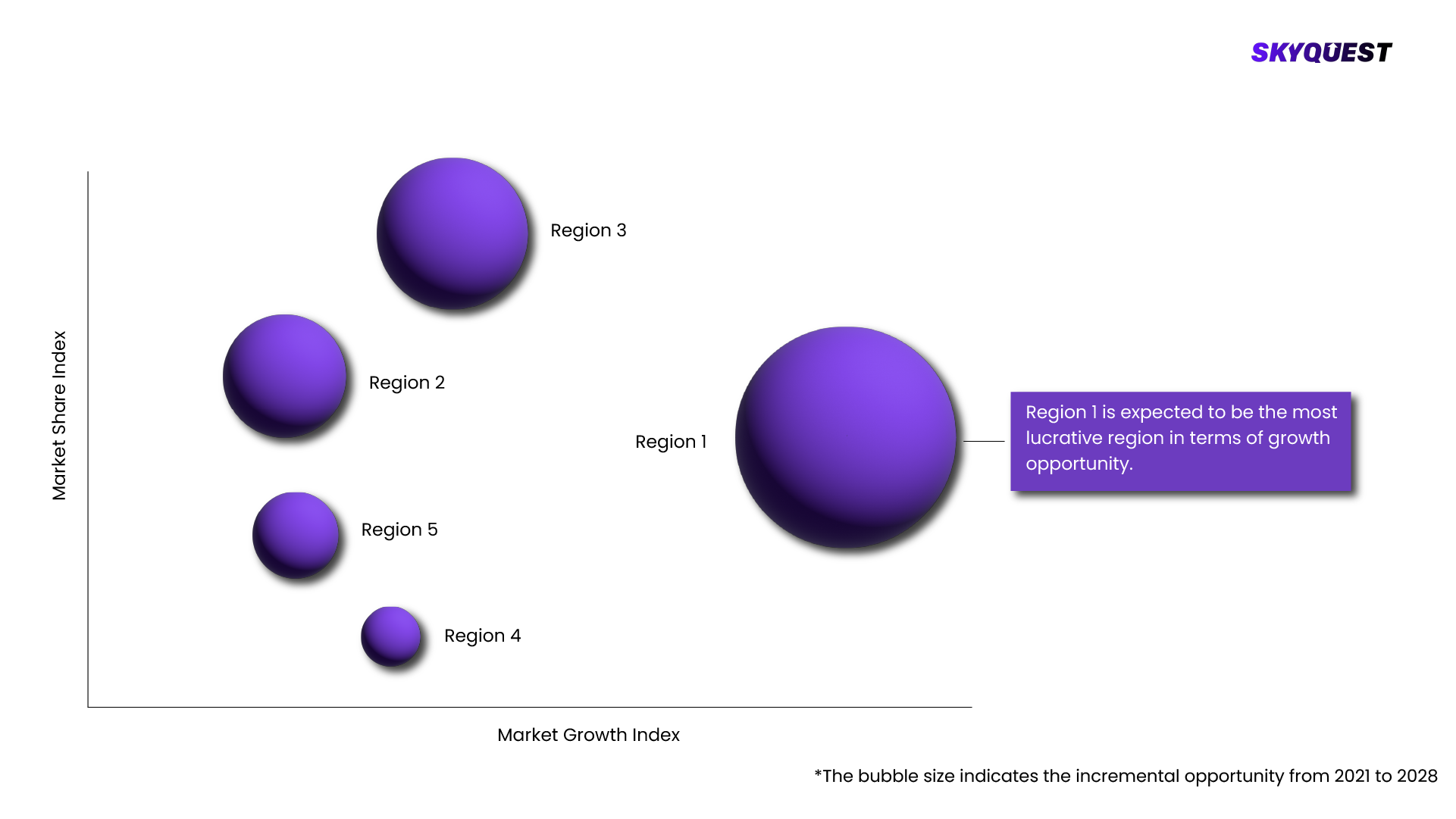Web Real-Time Communication (WebRTC) Market Insights
Market Overview:
The Web Real-Time Communication (WebRTC) Market reached a significant milestone in 2022, with a valuation of USD 4 billion. Moving forward, it is anticipated that the market will experience a robust compound annual growth rate (CAGR) of over 40% from 2023 to 2032. This projected growth can be attributed to the increasing demand for real-time communication solutions in various industries, including telecommunications, healthcare, and e-commerce, as well as advancements in technology and the growing adoption of cloud-based services.
Web Real-Time Communication (WebRTC) Market, Forecast & Y-O-Y Growth Rate, 2020 - 2028
To get more reports on the above market click here to
GET FREE SAMPLEThis report is being written to illustrate the market opportunity by region and by segments, indicating opportunity areas for the vendors to tap upon. To estimate the opportunity, it was very important to understand the current market scenario and the way it will grow in future.
Production and consumption patterns are being carefully compared to forecast the market. Other factors considered to forecast the market are the growth of the adjacent market, revenue growth of the key market vendors, scenario-based analysis, and market segment growth.
The market size was determined by estimating the market through a top-down and bottom-up approach, which was further validated with industry interviews. Considering the nature of the market we derived the Communications Equipment by segment aggregation, the contribution of the Communications Equipment in Technology Hardware & Equipment and vendor share.
To determine the growth of the market factors such as drivers, trends, restraints, and opportunities were identified, and the impact of these factors was analyzed to determine the market growth. To understand the market growth in detail, we have analyzed the year-on-year growth of the market. Also, historic growth rates were compared to determine growth patterns.
Segmentation Analysis:
The Web Real-Time Communication (WebRTC) Market is segmented by Component, Enterprise Size, Application, Region. We are analyzing the market of these segments to identify which segment is the largest now and in the future, which segment has the highest growth rate, and the segment which offers the opportunity in the future.
Web Real-Time Communication (WebRTC) Market Basis Point Share Analysis, 2021 Vs. 2028
To get detailed analysis on all segments
BUY NOW
- Based on Component the market is segmented as, Solution, Voice Calling & Conferencing, Messaging & File Sharing, Video Calling & Conferencing, Service
- Based on Enterprise Size the market is segmented as, Large Enterprise, SMEs
- Based on Application the market is segmented as, IT & Telecom, BFSI, Government & Defense, Healthcare, Retail, Media & Entertainment, Other
- Based on Region the market is segmented as, North America, Europe, Asia Pacific, Latin America, Middle East & Africa
Regional Analysis:
Web Real-Time Communication (WebRTC) Market is being analyzed by North America, Europe, Asia-Pacific (APAC), Latin America (LATAM), Middle East & Africa (MEA) regions. Key countries including the U.S., Canada, Germany, France, UK, Italy, Spain, China, India, Japan, Brazil, GCC Countries, and South Africa among others were analyzed considering various micro and macro trends.
Web Real-Time Communication (WebRTC) Market Attractiveness Analysis, By Region 2020-2028
To know more about the market opportunities by region and country, click here to
REQUEST FREE CUSTOMIZATIONWeb Real-Time Communication (WebRTC) Market : Risk Analysis
SkyQuest's expert analysts have conducted a risk analysis to understand the impact of external extremities on Web Real-Time Communication (WebRTC) Market. We analyzed how geopolitical influence, natural disasters, climate change, legal scenario, economic impact, trade & economic policies, social & ethnic concerns, and demographic changes might affect Web Real-Time Communication (WebRTC) Market's supply chain, distribution, and total revenue growth.
Competitive landscaping:
To understand the competitive landscape, we are analyzing key Web Real-Time Communication (WebRTC) Market vendors in the market. To understand the competitive rivalry, we are comparing the revenue, expenses, resources, product portfolio, region coverage, market share, key initiatives, product launches, and any news related to the Web Real-Time Communication (WebRTC) Market.
To validate our hypothesis and validate our findings on the market ecosystem, we are also conducting a detailed porter's five forces analysis. Competitive Rivalry, Supplier Power, Buyer Power, Threat of Substitution, and Threat of New Entry each force is analyzed by various parameters governing those forces.
Key Players Covered in the Report:
- ivers
- Web Real-Time Communication Market size valued at USD 4 billion in 2022 and is projected to observe more than 40% CAGR from 2023 to 2032. Growing demand for WebRTC solutions across SMEs is a crucial factor facilitating the industry expansion.
- The service allows companies to integrate video and audio within the current business code. This integration involves bringing together phones, social media, chat, voicemail, email, and any other communication channels used by an enterprise. Prominent companies, such as LogMeIn, Inc., Cisco Systems, Inc., and Microsoft Corporation, etc., are also offering a comprehensive suite of WebRTC services. In May 2021, Quickchannel launched WebRTC on its video platform, which allows users to live stream secure, branded, and high-quality video.
- Growth Drivers:Growing popularity of the BYOD trend Rising Work-from-Home trend Increasing demand for secure and robust communication solutions Growing demand for WebRTC across SMEs Increasing preference for online educationPitfalls & Challenges:Interoperability concerns across web browsers Lack of standardization
- Rising concerns of interoperability across web browsers may hamper the market growth
- Some of the major drawbacks faced by enterprises while implementing WebRTC technology or building a video & voice web app are interoperability issues with other platforms, protocols, and legacy systems. In addition to giving companies the freedom to innovate and offer consumers multiple choices of communication, the lack of standardization offers more work for developers and designers. Thus, the rising importance of interoperability in the implementation of WebRTC technology can restrict the industry progression.
- Burgeoning need for innovations in the telecom industry to drive adoption of WebRTC solutions
- The WebRTC market share from the solution component segment is expected to depict more than 43.5% CAGR through 2032. The compatibility of WebRTC solutions across Unified Communication and Collaboration (UCC) and VoIP apps is a key force accelerating the market demand. WebRTC has emerged as one of the most significant drivers of telecom innovation, along with IoT and browser communications. Given the open-source foundation of WebRTC, the development of numerous real-time communication solutions is feasible. In January 2022, for instance, CP Communications launched the Virtual Media Center and the secure video management platform, FastReturn, both of which are based on WebRTC.
- The industry share from the messaging & file sharing solution segment is poised to witness 41% CAGR till 2032. The technology offers instant file sharing and real-time messaging to its customers, which includes live private chats, live group chats, and offline chat facilities. Prominent businesses across the globe are creating and hosting videos on their websites for brand recognition, promotion, and building strong relationships with consumers. Rising need for secure and robust data transfer facilities is also likely to favor the demand for WebRTC-based messaging and file sharing for business and communication.
- Increasing preference for optimized profitability by large enterprises to drive WebRTC demand
- Large enterprises are likely to capture over 70% of the global WebRTC industry share through 2032. WebRTC provides internet services to large organizations, simplifies internal communication, and improves customer support. To properly experience WebRTC technology, several organizations are introducing WebRTC-as-a-service. External parties can be invited to web conferences through the internet without the need to install any plugins or applications. This minimizes opposition and makes meetings more productive, allowing large corporations to run their operations more easily and profitably.
- Rising capitalization on improved online surfing in the retail industry to boost WebRTC demand
- The web real-time communication market from the retail end-user segment will record nearly 19% share through 2032. The retail business is utilizing several technologies, such as Virtual Reality (VR), Augmented Reality (AR), and Mixed Reality (MR), to optimize supply chains and improve the online consumer experience. The number of internet consumers increased by 4.4% between 2020 and 2021. Several organizations are also deploying deeper WebRTC adaptations to gain a competitive edge by providing their clients with improved online surfing experiences and better communication tools.
- Rising prominence of networking in companies to push WebRTC adoption across Europe
- Europe WebRTC market size is predicted to grow with a 44% CAGR during the forecast period, owing to increased demand and acceptance of online shopping platforms in the region. The higher importance of personalized communications and platforms among modern users has made way for breakthrough technologies that enable easy, direct, and tailored interactions. This has turned critical in establishing a competitive advantage. The increasing need for video call API with WebRTC integration to allows users in communication will further drive the regional market revenue.
- Innovations to outline the growth of the industry
- Major players involved in the WebRTC market are majorly focusing on developing new solutions with better voice and video quality along with enhanced security from cyber-attacks. Some of them include Cisco System Inc., Avaya Inc., Oracle Corporation, and Dialogic Corporation. For instance, in March 2020, SimplyDoc launched a care-driven telehealth solution that is customizable to any mental health clinic, medical practice, hospital system, or healthcare scenario. This new solution is easy to use, while providing patients a secure and HIPAA compliant conversation in a few clicks.
- Impact of the COVID-19 outbreak on the web real-time communication market outlook
- The COVID-19 pandemic posed a huge stress on the healthcare industry and made way for the development in IoT and WebRTC, subsequently resulting in the emergence of smart devices to monitor patient health. This high-quality technology, WebRTC, that seamlessly enables P2P connections, was also highly favored in the crisis for enabling communication, voice and video calling, as well as data transfers.
- KEY MARKET SEGMENTS
- By Component
- Solution
- Voice Calling & Conferencing
- Messaging & File Sharing
- Video Calling & Conferencing
- Service
- By Enterprise Size
- Large Enterprise
- SMEs
- By Application
- IT & Telecom
- BFSI
- Government & Defense
- Healthcare
- Retail
- Media & Entertainment
- Other
- By Region
- North America
- Europe
- Asia Pacific
- Latin America
- Middle East & Africa
SkyQuest's Expertise:
The Web Real-Time Communication (WebRTC) Market is being analyzed by SkyQuest's analysts with the help of 20+ scheduled Primary interviews from both the demand and supply sides. We have already invested more than 250 hours on this report and are still refining our date to provide authenticated data to your readers and clients. Exhaustive primary and secondary research is conducted to collect information on the market, peer market, and parent market.
Our cross-industry experts and revenue-impact consultants at SkyQuest enable our clients to convert market intelligence into actionable, quantifiable results through personalized engagement.
Scope Of Report
| Report Attribute |
Details |
| The base year for estimation |
2021 |
| Historical data |
2016 – 2022 |
| Forecast period |
2022 – 2028 |
| Report coverage |
Revenue forecast, volume forecast, company ranking, competitive landscape, growth factors, and trends, Pricing Analysis |
| Segments covered |
- By Component - Solution, Voice Calling & Conferencing, Messaging & File Sharing, Video Calling & Conferencing, Service
- By Enterprise Size - Large Enterprise, SMEs
- By Application - IT & Telecom, BFSI, Government & Defense, Healthcare, Retail, Media & Entertainment, Other
- By Region - North America, Europe, Asia Pacific, Latin America, Middle East & Africa
|
| Regional scope |
North America, Europe, Asia-Pacific (APAC), Latin America (LATAM), Middle East & Africa (MEA) |
| Country scope |
U.S., Canada, Germany, France, UK, Italy, Spain, China, India, Japan, Brazil, GCC Countries, South Africa |
| Key companies profiled |
- ivers
- Web Real-Time Communication Market size valued at USD 4 billion in 2022 and is projected to observe more than 40% CAGR from 2023 to 2032. Growing demand for WebRTC solutions across SMEs is a crucial factor facilitating the industry expansion.
- The service allows companies to integrate video and audio within the current business code. This integration involves bringing together phones, social media, chat, voicemail, email, and any other communication channels used by an enterprise. Prominent companies, such as LogMeIn, Inc., Cisco Systems, Inc., and Microsoft Corporation, etc., are also offering a comprehensive suite of WebRTC services. In May 2021, Quickchannel launched WebRTC on its video platform, which allows users to live stream secure, branded, and high-quality video.
- Growth Drivers:Growing popularity of the BYOD trend Rising Work-from-Home trend Increasing demand for secure and robust communication solutions Growing demand for WebRTC across SMEs Increasing preference for online educationPitfalls & Challenges:Interoperability concerns across web browsers Lack of standardization
- Rising concerns of interoperability across web browsers may hamper the market growth
- Some of the major drawbacks faced by enterprises while implementing WebRTC technology or building a video & voice web app are interoperability issues with other platforms, protocols, and legacy systems. In addition to giving companies the freedom to innovate and offer consumers multiple choices of communication, the lack of standardization offers more work for developers and designers. Thus, the rising importance of interoperability in the implementation of WebRTC technology can restrict the industry progression.
- Burgeoning need for innovations in the telecom industry to drive adoption of WebRTC solutions
- The WebRTC market share from the solution component segment is expected to depict more than 43.5% CAGR through 2032. The compatibility of WebRTC solutions across Unified Communication and Collaboration (UCC) and VoIP apps is a key force accelerating the market demand. WebRTC has emerged as one of the most significant drivers of telecom innovation, along with IoT and browser communications. Given the open-source foundation of WebRTC, the development of numerous real-time communication solutions is feasible. In January 2022, for instance, CP Communications launched the Virtual Media Center and the secure video management platform, FastReturn, both of which are based on WebRTC.
- The industry share from the messaging & file sharing solution segment is poised to witness 41% CAGR till 2032. The technology offers instant file sharing and real-time messaging to its customers, which includes live private chats, live group chats, and offline chat facilities. Prominent businesses across the globe are creating and hosting videos on their websites for brand recognition, promotion, and building strong relationships with consumers. Rising need for secure and robust data transfer facilities is also likely to favor the demand for WebRTC-based messaging and file sharing for business and communication.
- Increasing preference for optimized profitability by large enterprises to drive WebRTC demand
- Large enterprises are likely to capture over 70% of the global WebRTC industry share through 2032. WebRTC provides internet services to large organizations, simplifies internal communication, and improves customer support. To properly experience WebRTC technology, several organizations are introducing WebRTC-as-a-service. External parties can be invited to web conferences through the internet without the need to install any plugins or applications. This minimizes opposition and makes meetings more productive, allowing large corporations to run their operations more easily and profitably.
- Rising capitalization on improved online surfing in the retail industry to boost WebRTC demand
- The web real-time communication market from the retail end-user segment will record nearly 19% share through 2032. The retail business is utilizing several technologies, such as Virtual Reality (VR), Augmented Reality (AR), and Mixed Reality (MR), to optimize supply chains and improve the online consumer experience. The number of internet consumers increased by 4.4% between 2020 and 2021. Several organizations are also deploying deeper WebRTC adaptations to gain a competitive edge by providing their clients with improved online surfing experiences and better communication tools.
- Rising prominence of networking in companies to push WebRTC adoption across Europe
- Europe WebRTC market size is predicted to grow with a 44% CAGR during the forecast period, owing to increased demand and acceptance of online shopping platforms in the region. The higher importance of personalized communications and platforms among modern users has made way for breakthrough technologies that enable easy, direct, and tailored interactions. This has turned critical in establishing a competitive advantage. The increasing need for video call API with WebRTC integration to allows users in communication will further drive the regional market revenue.
- Innovations to outline the growth of the industry
- Major players involved in the WebRTC market are majorly focusing on developing new solutions with better voice and video quality along with enhanced security from cyber-attacks. Some of them include Cisco System Inc., Avaya Inc., Oracle Corporation, and Dialogic Corporation. For instance, in March 2020, SimplyDoc launched a care-driven telehealth solution that is customizable to any mental health clinic, medical practice, hospital system, or healthcare scenario. This new solution is easy to use, while providing patients a secure and HIPAA compliant conversation in a few clicks.
- Impact of the COVID-19 outbreak on the web real-time communication market outlook
- The COVID-19 pandemic posed a huge stress on the healthcare industry and made way for the development in IoT and WebRTC, subsequently resulting in the emergence of smart devices to monitor patient health. This high-quality technology, WebRTC, that seamlessly enables P2P connections, was also highly favored in the crisis for enabling communication, voice and video calling, as well as data transfers.
- KEY MARKET SEGMENTS
- By Component
- Solution
- Voice Calling & Conferencing
- Messaging & File Sharing
- Video Calling & Conferencing
- Service
- By Enterprise Size
- Large Enterprise
- SMEs
- By Application
- IT & Telecom
- BFSI
- Government & Defense
- Healthcare
- Retail
- Media & Entertainment
- Other
- By Region
- North America
- Europe
- Asia Pacific
- Latin America
- Middle East & Africa
|
| Customization scope |
Free report customization (15% Free customization) with purchase. Addition or alteration to country, regional & segment scope. |
| Pricing and purchase options |
Reap the benefits of customized purchase options to fit your specific research requirements. |
Objectives of the Study
- To forecast the market size, in terms of value, for various segments with respect to five main regions, namely, North America, Europe, Asia-Pacific (APAC), Latin America (LATAM), Middle East & Africa (MEA)
- To provide detailed information regarding the major factors influencing the growth of the Market (drivers, restraints, opportunities, and challenges)
- To strategically analyze the micro markets with respect to the individual growth trends, future prospects, and contribution to the total market
- To provide a detailed overview of the value chain and analyze market trends with the Porter's five forces analysis
- To analyze the opportunities in the market for various stakeholders by identifying the high-growth Segments
- To identify the key players and comprehensively analyze their market position in terms of ranking and core competencies, along with detailing the competitive landscape for the market leaders
- To analyze competitive development such as joint ventures, mergers and acquisitions, new product launches and development, and research and development in the market
What does this Report Deliver?
- Market Estimation for 20+ Countries
- Historical data coverage: 2016 to 2022
- Growth projections: 2022 to 2028
- SkyQuest's premium market insights: Innovation matrix, IP analysis, Production Analysis, Value chain analysis, Technological trends, and Trade analysis
- Customization on Segments, Regions, and Company Profiles
- 100+ tables, 150+ Figures, 10+ matrix
- Global and Country Market Trends
- Comprehensive Mapping of Industry Parameters
- Attractive Investment Proposition
- Competitive Strategies Adopted by Leading Market Participants
- Market drivers, restraints, opportunities, and its impact on the market
- Regulatory scenario, regional dynamics, and insights of leading countries in each region
- Segment trends analysis, opportunity, and growth
- Opportunity analysis by region and country
- Porter's five force analysis to know the market's condition
- Pricing analysis
- Parent market analysis
- Product portfolio benchmarking





